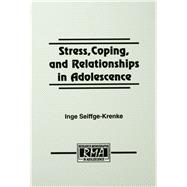
Note: Supplemental materials are not guaranteed with Rental or Used book purchases.
Purchase Benefits
What is included with this book?
| Preface | p. ix |
| Acknowledgments | p. xi |
| Adolescent Coping Pointing to a Research Deficit | p. 1 |
| Conceptual Approach For Studying Stress, Coping, And Relationships in Adolescence | p. 26 |
| An Analysis of the Coping Process | p. 44 |
| Assessment of Daily Stressors Event Parameters and Coping | p. 69 |
| Ways of Coping With Everyday Problems and Minor Events | p. 94 |
| Internal Resources and Their Effect on Coping Behavior | p. 130 |
| Changes in Stress Perception And Coping Style as a Function Of Perceived Family Climate | p. 147 |
| The Unique Contribution Of Close Friends To Coping Behavior | p. 170 |
| Stress, Coping, and Relationships As Risk and Protective Factors In Explaining Adolescent Depression | p. 190 |
| Conclusions | p. 213 |
| Appendix | p. 238 |
| References | p. 249 |
| Author Index | p. 273 |
| Subject Index | p. 283 |
| Table of Contents provided by Publisher. All Rights Reserved. |
The New copy of this book will include any supplemental materials advertised. Please check the title of the book to determine if it should include any access cards, study guides, lab manuals, CDs, etc.
The Used, Rental and eBook copies of this book are not guaranteed to include any supplemental materials. Typically, only the book itself is included. This is true even if the title states it includes any access cards, study guides, lab manuals, CDs, etc.